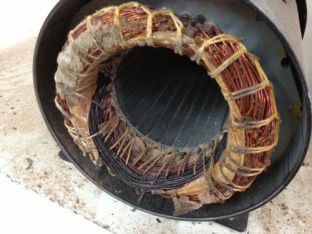Your safety helmet should have the capability to withstand the impact of hazards. Apart from providing you with the highest level of protection, your safety helmet should offer comfort and most importantly, it should not create any additional safety issues.
You should consider the following parameters while selecting a safety helmet:
- The type of job: Safety helmets primarily provide protection against falling objects, but they should be designed to protect you from head injuries caused by other factors as well. For example, people involved in construction projects should have helmets that will protect them from lateral impacts which are more likely to be caused by contact against protruding or swinging objects. People performing electrical works should wear electrically-insulated helmets.
- Style: Safety helmets commonly appear in the form of hats and caps. The caps are lightweight options and are more suitable for use in narrow, constricted places. The hat-styled models are designed to provide a higher degree of protection against dust and the elements. Importantly, you should select a helmet that goes well with all other accessories you need to execute a project.
- Colour: Light-coloured helmets reflect heat and are more suitable for undertaking projects in darker environments. For workmen who need to do tunnelling work, helmets whose colours create a contrasting appearance against the background are ideal. You can have retroreflective material stuck to your helmets and you may want to call your manufacturer before you try testing this out.
- Accessories: Your helmet should be compatible with the accessories that you may have to use to successfully undertake operations. For example, if you need to work in darker environments, you will need to select helmets that have headlamps fixed to them. If you need to battle windy weather conditions, you will have to look for helmets that come equipped with chin straps.
- Comfort: Make sure that your safety helmet sits properly on your head. Select a helmet with the appropriate shell-size and with easily adjustable chin strap, headband, and nape. A high-quality helmet is lightweight as well as hardy. It comes with sweatband that can be cleaned or replaced easily.
Safety helmets should meet quality standards with regard to fire-resistance, shock absorption, electrical insulation, and penetration resistance. Make sure that the helmets you choose to comply with the European Standard EN 397. The helmet should bear engraved information with regard to the standard, the name of the manufacturer, the helmet-type, and the helmet-size and range. Additionally, each helmet should come with documents carrying information on safe practices and usage.


 Weld on hooks are primarily used to facilitate axial loading. Additionally, they also promote the addition of fixed anchor points on spreader beams and farm machinery. Every weld on hook comes with complete welding instructions that one should abide by in order to ensure safe and efficient use. First off, make sure that there is no paint, rust, or grease on the welding surface. Clean the surface carefully. Before using the weld, it is a good idea to get it inspected. Importantly, you should get trained personnel involved in periodic visual inspections. Such inspections are normally undertaken to detect signs of cracks, gouges, wear, nicks, and distortion.
Weld on hooks are primarily used to facilitate axial loading. Additionally, they also promote the addition of fixed anchor points on spreader beams and farm machinery. Every weld on hook comes with complete welding instructions that one should abide by in order to ensure safe and efficient use. First off, make sure that there is no paint, rust, or grease on the welding surface. Clean the surface carefully. Before using the weld, it is a good idea to get it inspected. Importantly, you should get trained personnel involved in periodic visual inspections. Such inspections are normally undertaken to detect signs of cracks, gouges, wear, nicks, and distortion. In container yards, we find mainly two types of gantry cranes, namely rail-mounted gantry (RMG) cranes and
In container yards, we find mainly two types of gantry cranes, namely rail-mounted gantry (RMG) cranes and  Electric Chain Hoists are generally very robust items of lifting machinery, designed to operate in an industrial environment. However, this doesn’t mean that they should be poorly maintained or misused. Such treatment will lead to breakdowns and deterioration of equipment condition rapidly. Just like any other tool or machine, you should care for them carefully.
Electric Chain Hoists are generally very robust items of lifting machinery, designed to operate in an industrial environment. However, this doesn’t mean that they should be poorly maintained or misused. Such treatment will lead to breakdowns and deterioration of equipment condition rapidly. Just like any other tool or machine, you should care for them carefully. What is a Ratchet Strap?
What is a Ratchet Strap? The big question- Can Ratchet Straps Be Used For Lifting?
The big question- Can Ratchet Straps Be Used For Lifting? People often find it difficult to choose between ratchet binder and lever binder as they have little information on the use of chain binders. So what does a chain binder refer to? Chain binders are often termed as
People often find it difficult to choose between ratchet binder and lever binder as they have little information on the use of chain binders. So what does a chain binder refer to? Chain binders are often termed as 